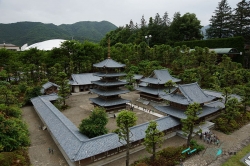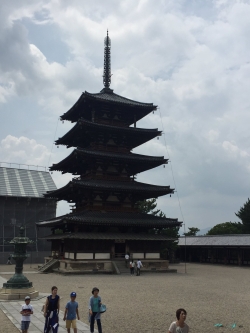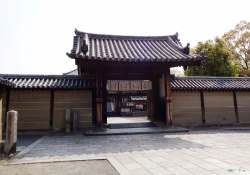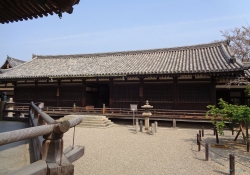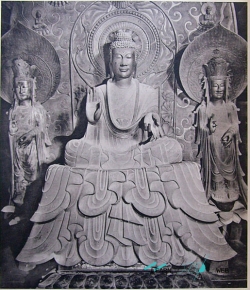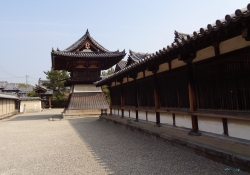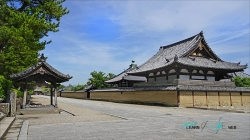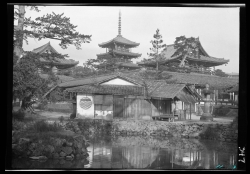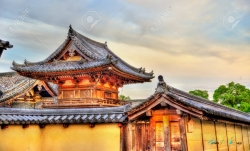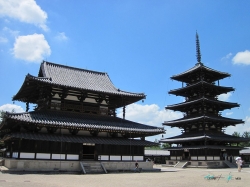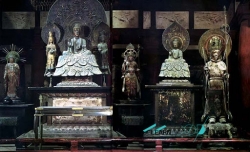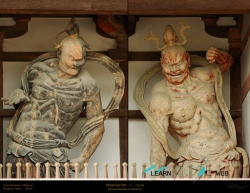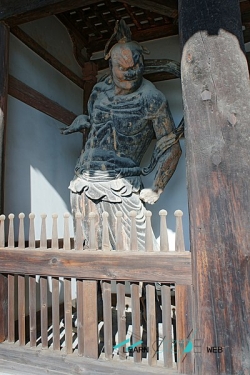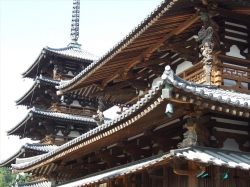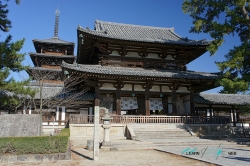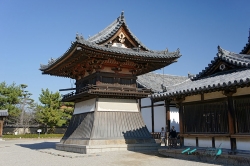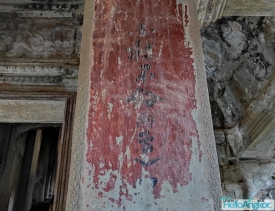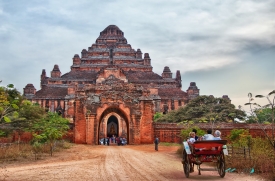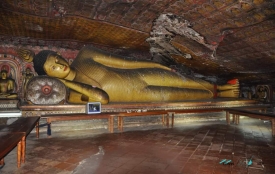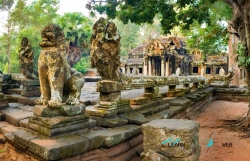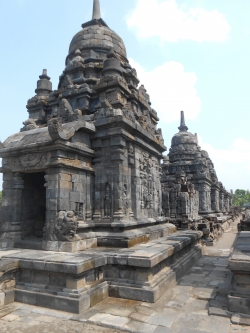ABOUT Hōryū-ji
Hōryū-ji (法隆寺, Temple of the Flourishing Dharma) is a Buddhist temple that was once one of the powerful Seven Great Temples, in Ikaruga, Nara Prefecture, Japan. Its full name is Hōryū Gakumonji (法隆学問寺), or Learning Temple of the Flourishing Law, the complex serving as both a seminary and monastery.
The temple was founded by Prince Shōtoku in 607, but according to the Nihon Shoki, in 670 all buildings were burned down by lightning. However, reconstructed at least 1,300 years ago, the Kondō (main hall) is widely recognized as the world's oldest wooden building.
A fire that broke out during the dismantling and repair of Kondo on January 26, 1949 destroyed a mural of the Asuka period, a national treasure, and shocked the Japanese. Based on this accident, the day when the fire broke out is now fire prevention day for cultural properties.
In 1993, Horyu-ji Temple, along with Hokki-ji, was registered as Japan's first UNESCO World Heritage site under the name of Buddhist Monuments in the Hōryū-ji Area.
A tree ring survey conducted in 2001 revealed that the shinbashira of the five-story pagoda were cut down in 594, before burned down in 670.
The temple was originally commissioned by Prince Shōtoku; at the time it was called Wakakusadera, a name that is still sometimes used. This first temple is believed to have been completed by 607. Hōryū-ji was dedicated to Yakushi Nyorai, the Buddha of healing and in honor of the prince's father. Excavations done in 1939 confirmed that Prince Shotoku's palace, the Ikaruga-no-miya (斑鳩宮), occupied the eastern part of the current temple complex, where the Tō-in (東院) sits today. Also discovered were the ruins of a temple complex which was southwest of the prince's palace and not completely within the present temple complex. The original temple, named by modern historians and archaeologists Wakakusa-garan (若草伽藍), was lost, probably burned to the ground after being hit by lightning in 670. The temple was reconstructed but slightly reoriented in a northwest position, which is believed to have been completed by around 711. The temple was repaired and reassembled in the early twelfth century, in 1374, and 1603.
During the Kamakura period, as the cult of Shōtoku rose to prominence in Japan, Horyū-ji became an important site for veneration of the long-dead prince. Ritual practices dedicated to Prince Shōtoku increased in number during this time. A memorial service for the prince called the ceremony of Shōryō-e became an annual event at Hōryū-ji in the early 12th century, and it is still practiced at the temple and other temples associated with Prince Shōtoku to this day. The Kamakura and early Heian period also brought new additions to Hōryū-ji, including the dedication of several new halls in the Eastern and Western compounds to venerate the Prince as the incarnation of the bodhisattva Kannon. The growth of the Shōtoku cult from the 7th century onward propelled the rise of Hōryū-ji as a well-known temple in Japan. By the end of Tokugawa rule in the mid-1800s, the temple was receiving extensive funds from the shogunate on a regular basis. Furthermore, the temple grew and maintained close relations with the Hossō sect throughout the Edo period.
The temple was founded by Prince Shōtoku in 607, but according to the Nihon Shoki, in 670 all buildings were burned down by lightning. However, reconstructed at least 1,300 years ago, the Kondō (main hall) is widely recognized as the world's oldest wooden building.
A fire that broke out during the dismantling and repair of Kondo on January 26, 1949 destroyed a mural of the Asuka period, a national treasure, and shocked the Japanese. Based on this accident, the day when the fire broke out is now fire prevention day for cultural properties.
In 1993, Horyu-ji Temple, along with Hokki-ji, was registered as Japan's first UNESCO World Heritage site under the name of Buddhist Monuments in the Hōryū-ji Area.
A tree ring survey conducted in 2001 revealed that the shinbashira of the five-story pagoda were cut down in 594, before burned down in 670.
The temple was originally commissioned by Prince Shōtoku; at the time it was called Wakakusadera, a name that is still sometimes used. This first temple is believed to have been completed by 607. Hōryū-ji was dedicated to Yakushi Nyorai, the Buddha of healing and in honor of the prince's father. Excavations done in 1939 confirmed that Prince Shotoku's palace, the Ikaruga-no-miya (斑鳩宮), occupied the eastern part of the current temple complex, where the Tō-in (東院) sits today. Also discovered were the ruins of a temple complex which was southwest of the prince's palace and not completely within the present temple complex. The original temple, named by modern historians and archaeologists Wakakusa-garan (若草伽藍), was lost, probably burned to the ground after being hit by lightning in 670. The temple was reconstructed but slightly reoriented in a northwest position, which is believed to have been completed by around 711. The temple was repaired and reassembled in the early twelfth century, in 1374, and 1603.
During the Kamakura period, as the cult of Shōtoku rose to prominence in Japan, Horyū-ji became an important site for veneration of the long-dead prince. Ritual practices dedicated to Prince Shōtoku increased in number during this time. A memorial service for the prince called the ceremony of Shōryō-e became an annual event at Hōryū-ji in the early 12th century, and it is still practiced at the temple and other temples associated with Prince Shōtoku to this day. The Kamakura and early Heian period also brought new additions to Hōryū-ji, including the dedication of several new halls in the Eastern and Western compounds to venerate the Prince as the incarnation of the bodhisattva Kannon. The growth of the Shōtoku cult from the 7th century onward propelled the rise of Hōryū-ji as a well-known temple in Japan. By the end of Tokugawa rule in the mid-1800s, the temple was receiving extensive funds from the shogunate on a regular basis. Furthermore, the temple grew and maintained close relations with the Hossō sect throughout the Edo period.
The Best Pictures of Hōryū-ji
Videos of Hōryū-ji










